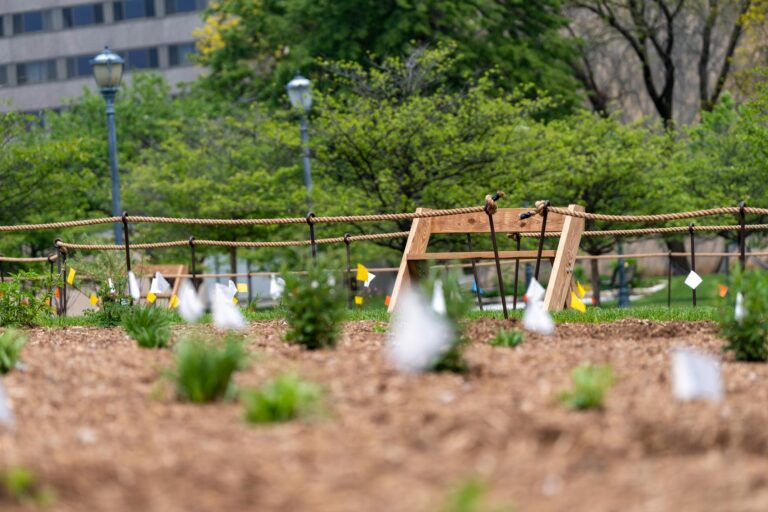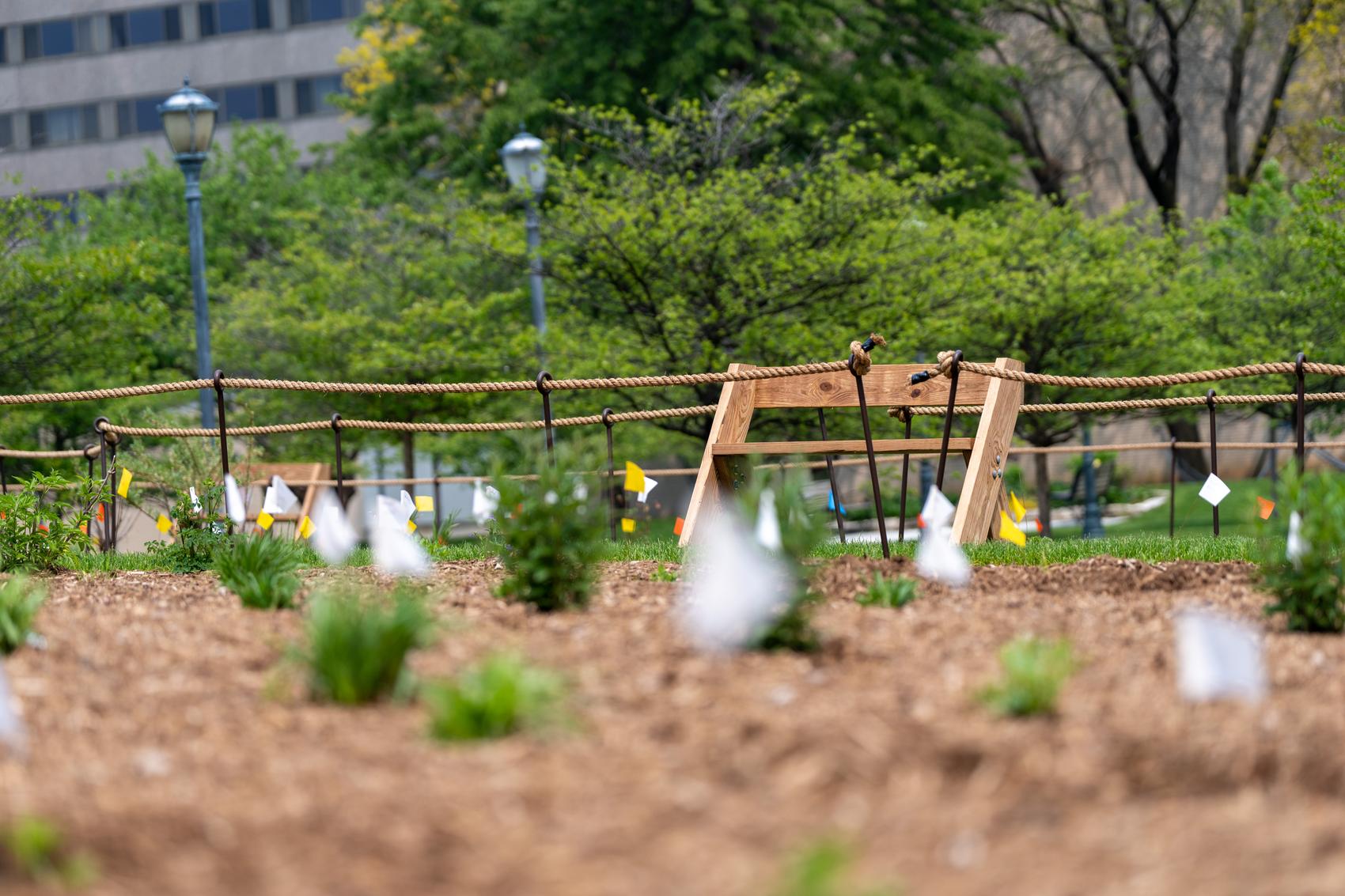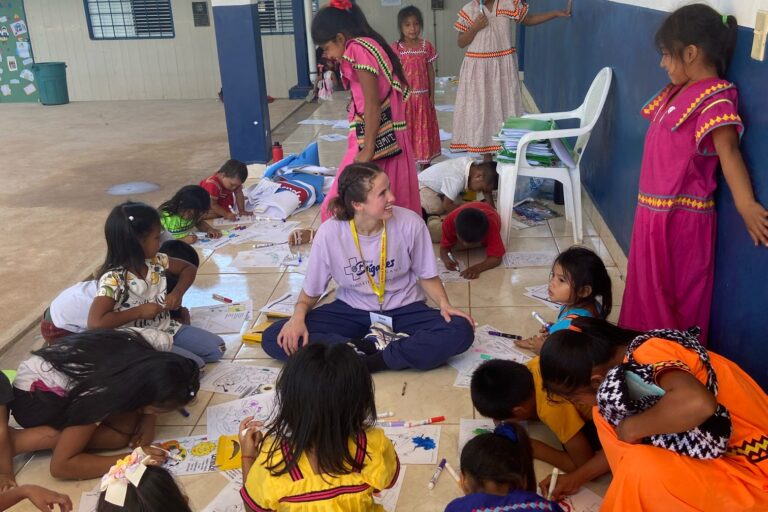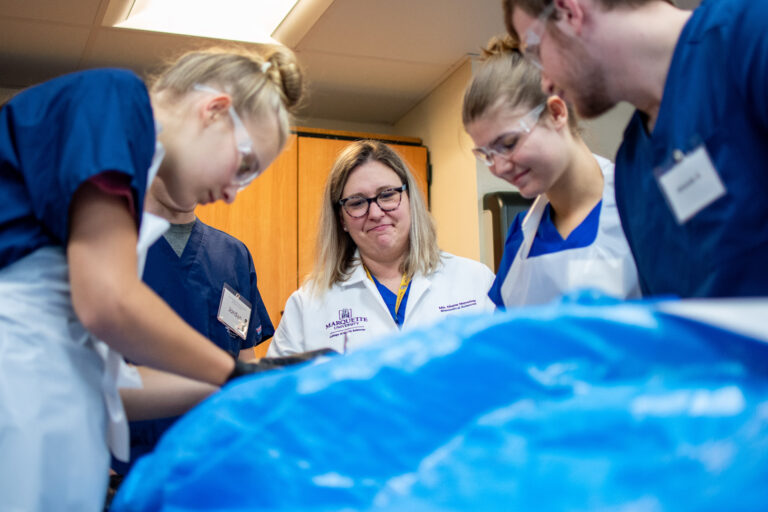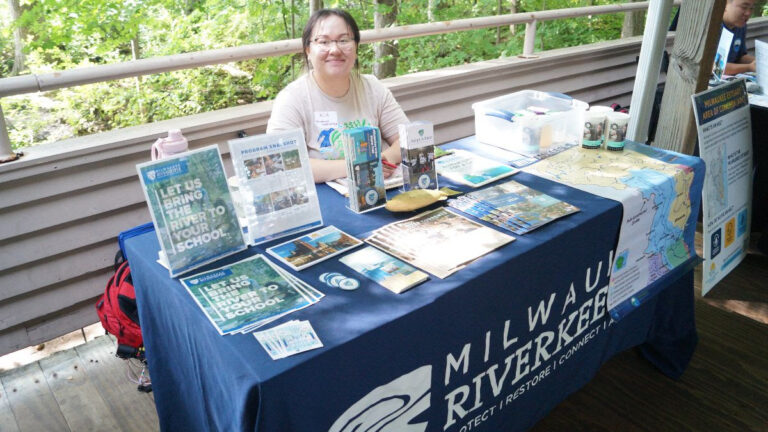Nestled between the AMU and Varsity Theatre lies Marquette’s own time machine: pocket prairies.
“We wanted to bring a visual representation of what this area of Wisconsin looked like 200 to 300 years ago,” says Kirsten Boeh, communications coordinator for the Klingler College of Arts and Sciences. “So, pre-colonization, what was growing here?”
The pocket prairies are two sections of land on Eckstein Common with around 35 native Wisconsin plants, including wildflowers, grasses and shrubs.
“Thirty-three percent of the state used to be prairie and oak savanna. Unfortunately, less than 1% of that habitat remains, mostly because European colonists altered the landscape by farming and fire suppression,” says Dr. Nathan Lemoine, assistant professor of biological sciences and an ecologist.
With the pocket prairie project, Lemoine adds, “I wanted to bring a bit of prairie back to Milwaukee to both help preserve this important habitat and also remind the Marquette community of our connection to nature.”
Lemoine, Boeh and Chelsea Malacara, campus sustainability coordinator, are co-leaders of Go Wild, the campus organization behind the pocket prairies initiative, which will allow Marquette to participate in federal and state initiatives to restore pollinator habitats, as well as provide several other benefits to the campus ecosystem.
Marquette’s green space is primarily covered by turf grass, which is functionally useless from an ecological standpoint, Lemoine says, adding that by converting even a small space, “prairie gardens could help to reduce runoff, require less water and enhance biodiversity in even our highly urban setting.”
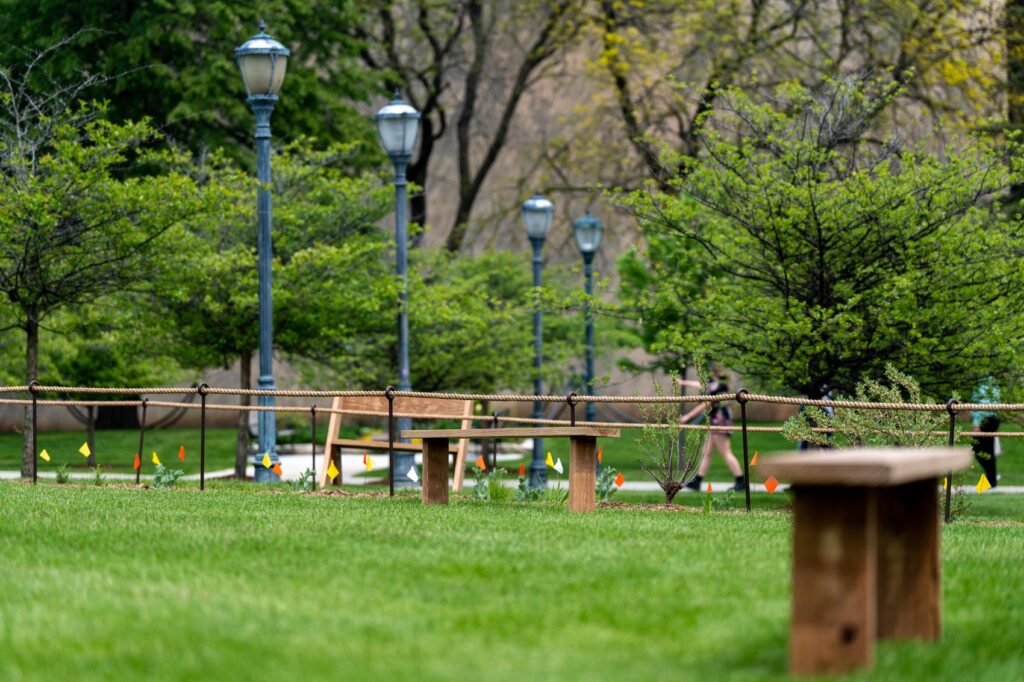
The prairies will also serve as a teaching tool for biology, engineering, theology and philosophy courses, and be an interactive and visual engagement fixture on campus that would connect the campus community to one of Wisconsin’s vital ecosystems.
With the prairies planted, campus has been buzzing with interest in how to incorporate them into the classroom. “We’ve now provided a space on campus as a resource. Now we ask, ‘What do you want to do with it?’” Boeh says.
Lemoine has plans to create a biodiversity experiment in the middle of the prairies, which he says will provide research and educational benefits to undergraduate and graduate students across campus. However, the project is not limited to the sciences.
Grace Gasser, a junior in the Diederich College of Communication, has used the prairies in a documentary film for her advanced production class. Next year, English professors are looking at taking their classes to the prairies to see how nature impacts creativity. Other departments, including history and theology, are also looking to incorporate the prairies into their curricula.
“Students can’t help but notice it,” Boeh says.
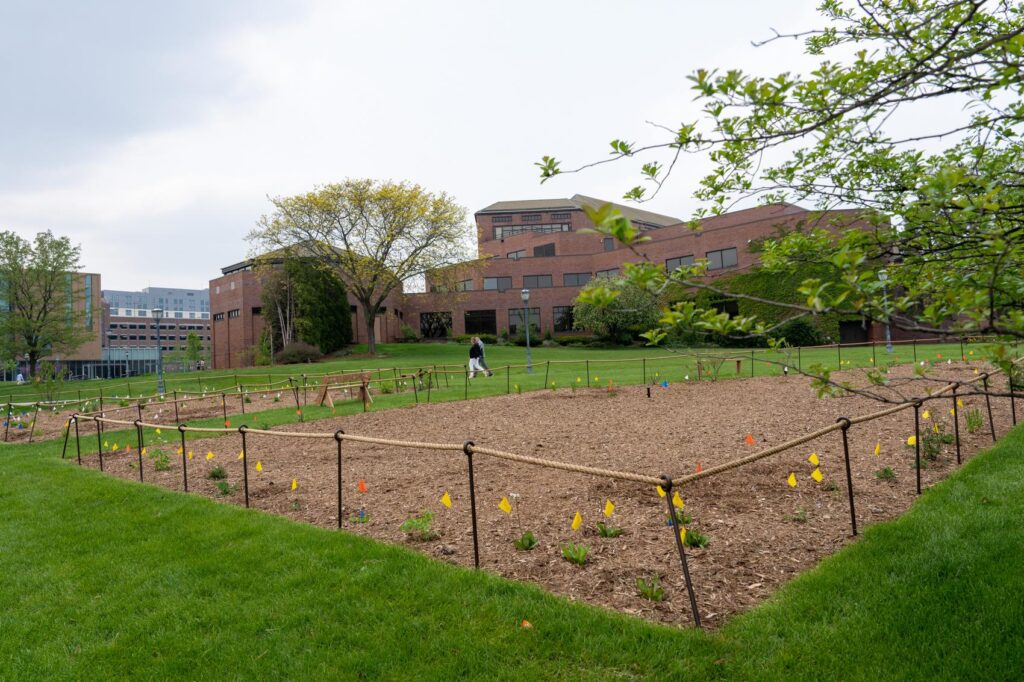
Gasser adds that she hopes the following academic years, students will utilize the space as an escape from city life and appreciate nature.
The pocket prairie project was made possible through the Explorer Challenge, which helps fund innovative projects that make an impact and advance Beyond Boundaries, Marquette’s strategic plan.
Related Content:
